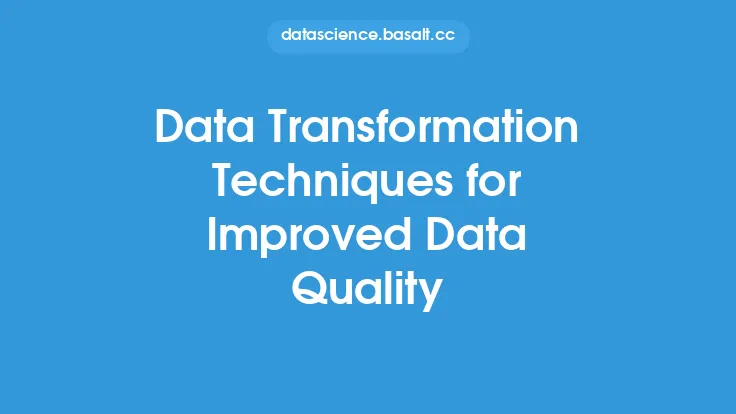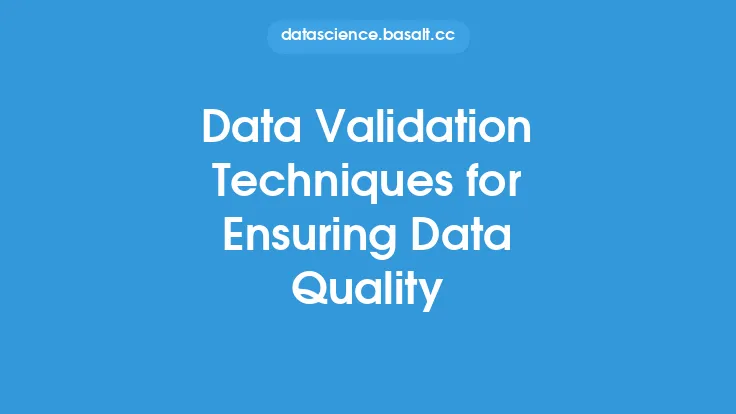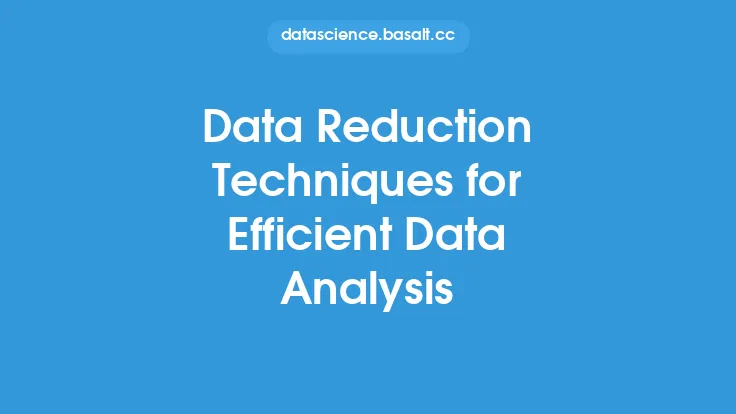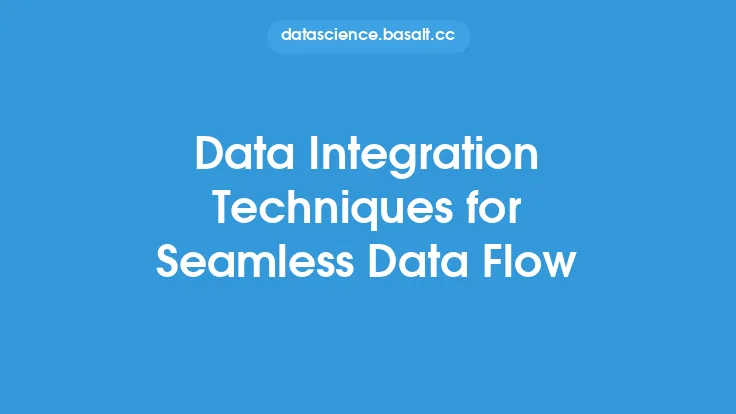Data quality is a critical aspect of any data-driven organization, as it directly impacts the accuracy and reliability of insights and decision-making processes. Poor data quality can lead to incorrect conclusions, wasted resources, and lost opportunities. To ensure high-quality data, it is essential to employ effective data processing techniques that can handle various data sources, formats, and volumes. In this article, we will delve into the world of data processing techniques that can improve data quality, exploring the methods, tools, and best practices that data engineers and professionals can use to achieve this goal.
Introduction to Data Quality
Data quality refers to the accuracy, completeness, consistency, and reliability of data. High-quality data is essential for making informed decisions, identifying trends, and optimizing business processes. However, data quality issues can arise from various sources, including human error, system glitches, and data integration problems. To address these issues, data processing techniques play a vital role in ensuring that data is accurate, complete, and consistent.
Data Profiling and Validation
Data profiling and validation are critical steps in ensuring data quality. Data profiling involves analyzing data to identify patterns, trends, and anomalies, while data validation checks data against predefined rules and constraints to ensure accuracy and consistency. Data profiling and validation can be performed using various techniques, including data visualization, statistical analysis, and data quality metrics. For example, data engineers can use data visualization tools to identify outliers and anomalies in the data, while statistical analysis can help identify trends and patterns.
Data Cleaning and Preprocessing
Data cleaning and preprocessing are essential steps in data processing that can significantly improve data quality. Data cleaning involves removing duplicates, handling missing values, and correcting errors, while data preprocessing involves transforming and formatting data into a suitable format for analysis. Data cleaning and preprocessing can be performed using various techniques, including data normalization, data transformation, and data feature scaling. For example, data engineers can use data normalization techniques to scale numeric data to a common range, while data transformation can be used to convert categorical data into numeric data.
Data Integration and Aggregation
Data integration and aggregation are critical steps in data processing that can improve data quality by combining data from multiple sources and providing a unified view of the data. Data integration involves combining data from multiple sources, while data aggregation involves summarizing and grouping data to provide insights. Data integration and aggregation can be performed using various techniques, including data warehousing, data virtualization, and data federation. For example, data engineers can use data warehousing to integrate data from multiple sources and provide a unified view of the data, while data virtualization can be used to provide real-time access to integrated data.
Data Transformation and Feature Engineering
Data transformation and feature engineering are essential steps in data processing that can improve data quality by transforming and formatting data into a suitable format for analysis. Data transformation involves converting data from one format to another, while feature engineering involves creating new features from existing data to improve model performance. Data transformation and feature engineering can be performed using various techniques, including data encoding, data decoding, and data feature extraction. For example, data engineers can use data encoding techniques to convert categorical data into numeric data, while feature engineering can be used to create new features from existing data to improve model performance.
Data Quality Metrics and Monitoring
Data quality metrics and monitoring are critical components of data processing that can help ensure data quality. Data quality metrics involve measuring data quality using various metrics, such as accuracy, completeness, and consistency, while data monitoring involves tracking data quality in real-time to identify issues and anomalies. Data quality metrics and monitoring can be performed using various techniques, including data quality scorecards, data quality dashboards, and data monitoring tools. For example, data engineers can use data quality scorecards to measure data quality and identify areas for improvement, while data monitoring tools can be used to track data quality in real-time and identify issues and anomalies.
Best Practices for Data Processing
To ensure high-quality data, it is essential to follow best practices for data processing. These best practices include data validation, data cleaning, data transformation, data integration, and data monitoring. Additionally, data engineers and professionals should use data quality metrics and monitoring tools to track data quality and identify areas for improvement. By following these best practices, organizations can ensure high-quality data that is accurate, complete, and consistent, and make informed decisions that drive business success.
Tools and Technologies for Data Processing
There are various tools and technologies available for data processing that can improve data quality. These tools and technologies include data processing frameworks, data integration tools, data quality tools, and data monitoring tools. For example, data engineers can use data processing frameworks like Apache Spark and Apache Beam to process large-scale data sets, while data integration tools like Apache NiFi and Talend can be used to integrate data from multiple sources. Additionally, data quality tools like Trifacta and DataQuality can be used to measure data quality and identify areas for improvement, while data monitoring tools like Splunk and ELK can be used to track data quality in real-time.
Conclusion
In conclusion, data processing techniques play a critical role in ensuring data quality. By using data profiling and validation, data cleaning and preprocessing, data integration and aggregation, data transformation and feature engineering, and data quality metrics and monitoring, organizations can ensure high-quality data that is accurate, complete, and consistent. Additionally, by following best practices for data processing and using various tools and technologies, organizations can improve data quality and make informed decisions that drive business success. As data continues to grow in volume, variety, and velocity, the importance of data processing techniques for improved data quality will only continue to increase, making it essential for data engineers and professionals to stay up-to-date with the latest techniques, tools, and technologies.





